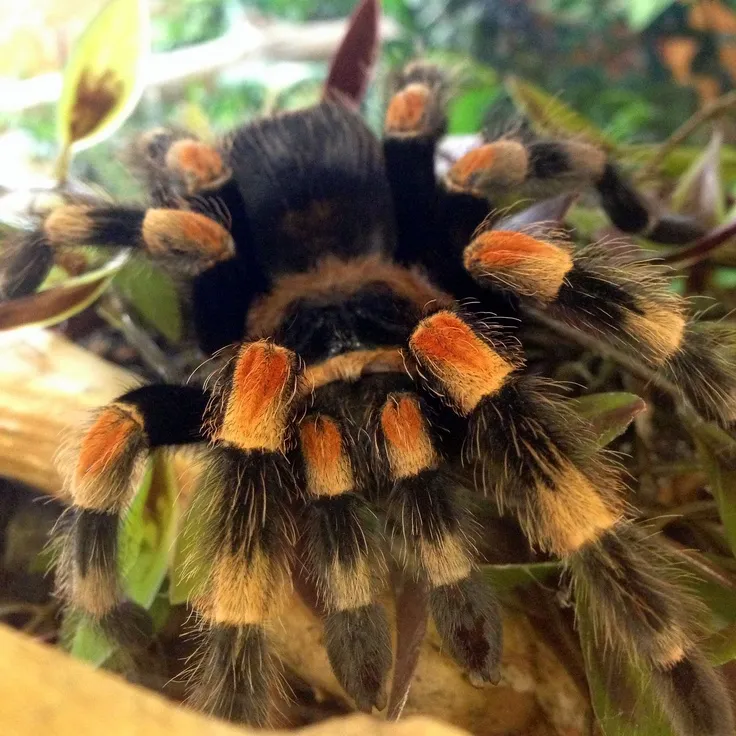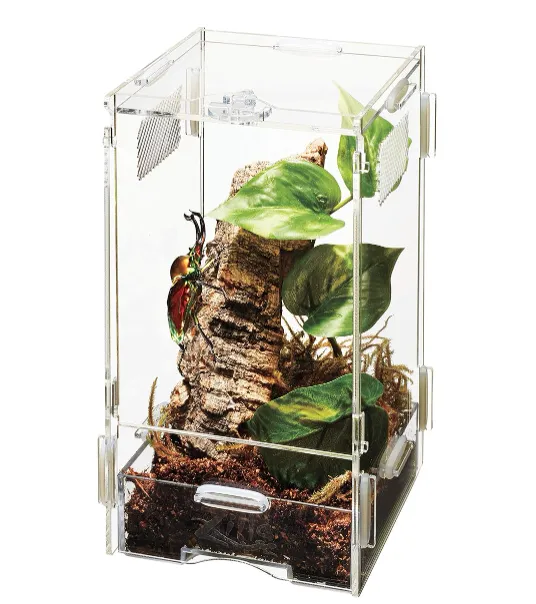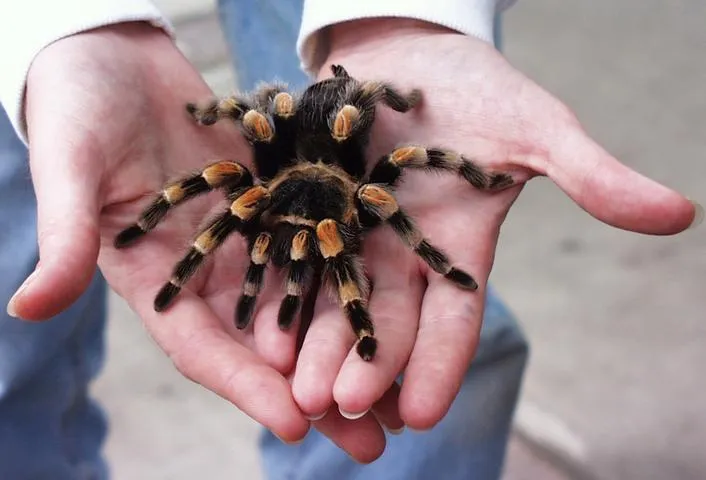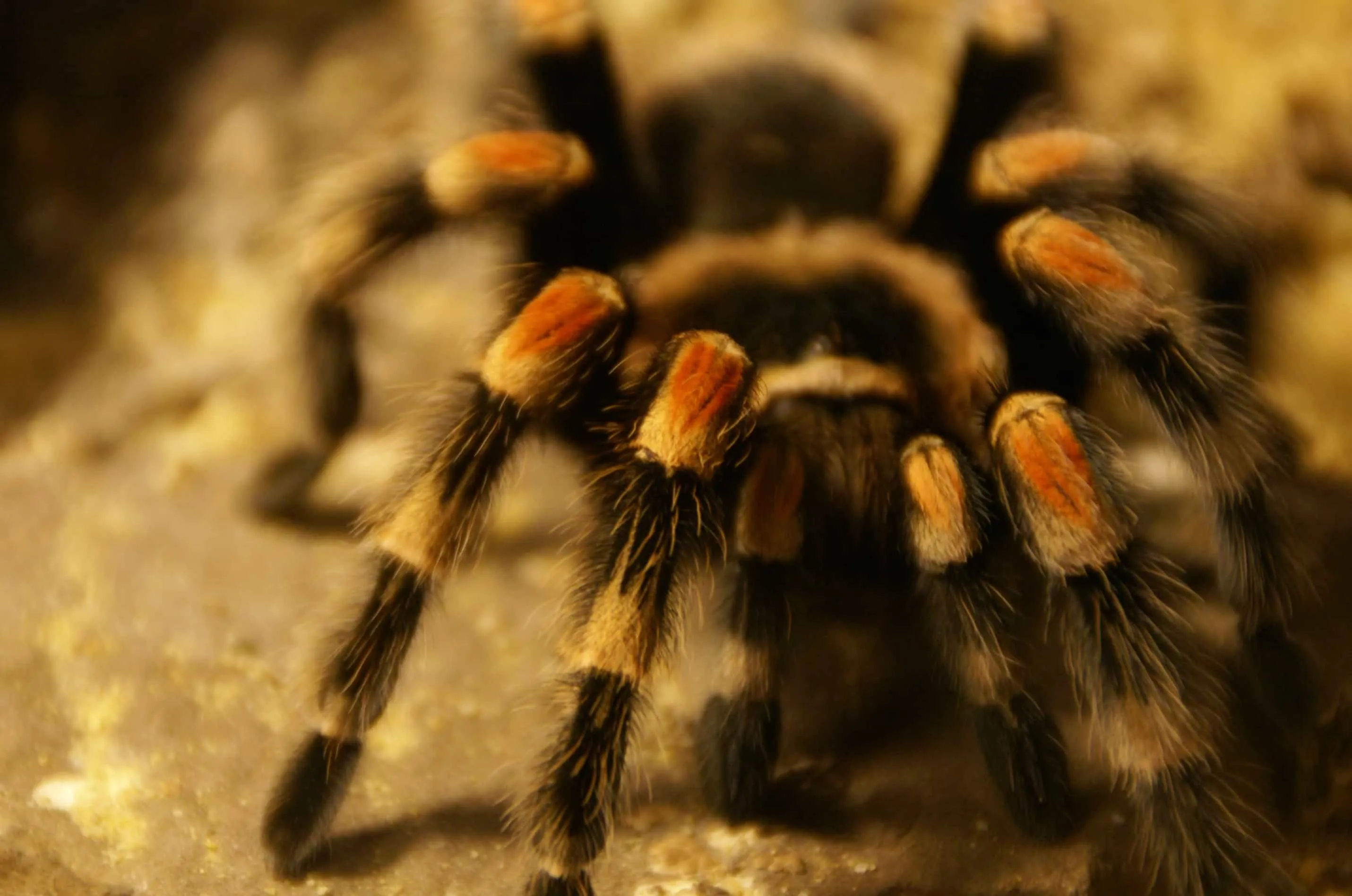What are Mexican Red Knee Tarantulas?
The Mexican Red Knee Tarantula (Brachypelma hamorii), also known as the Red-kneed Tarantula, is a popular pet tarantula species, famed for its striking appearance and relatively docile temperament. Native to the Pacific slopes of Mexico, these spiders are easily recognizable by their black bodies and vibrant red-orange markings on their leg joints. These terrestrial arachnids are relatively slow-growing, reaching a leg span of up to 6 inches, and can live for several years, making them a long-term companion for any arachnid enthusiast. They are a sought-after species due to their beauty and manageable care requirements. Providing a suitable environment, including proper temperature, humidity, and of course, appropriate feeding, is crucial for the health and well-being of your Red Knee Tarantula.
Understanding the Feeding Habits of Red Knee Tarantulas
Red Knee Tarantulas, like all tarantulas, are opportunistic predators. In their natural habitat, they feed on insects, small invertebrates, and occasionally small vertebrates. As pets, their diet needs to be carefully managed to ensure they receive proper nutrition without overfeeding. Their feeding habits are heavily influenced by their age, size, and the environmental conditions they are kept in. A well-balanced diet is essential for their growth, molting process, and overall health. Understanding the specific needs of these tarantulas is key to providing a good quality of life. Feeding frequency, the type of food offered, and portion size all play critical roles in their well-being.
Top 5 Facts About Feeding Red Knee Tarantulas

Here are the top five essential facts about feeding Red Knee Tarantulas to help you care for these fascinating creatures.
Fact 1 How Often to Feed a Juvenile Red Knee Tarantula
Juvenile Red Knee Tarantulas require more frequent feedings than adults to support their rapid growth. Typically, a juvenile tarantula should be fed two to three times per week. The frequency will depend on the size of the spider and the size of the prey. Observe your tarantula’s abdomen, a plump abdomen indicates a well-fed spider. Monitor their eating habits closely; if they refuse food, it could be a sign that they are nearing a molt. It is also essential to ensure they always have access to fresh water. Regular feeding helps juveniles grow to maturity, but it’s vital to avoid overfeeding, as this can lead to health problems, including a ruptured abdomen. Juvenile tarantulas are in their most vulnerable stage and need appropriate care.
Factors Affecting Feeding Frequency
Several factors can impact how often you feed a juvenile Red Knee Tarantula. The most important factor is the spider’s growth rate. The temperature of the enclosure also plays a significant role; warmer temperatures typically speed up their metabolism, leading to a greater appetite. The size of the prey items is another consideration; always match the prey size to the tarantula’s body. A good rule of thumb is to provide prey that is no larger than the tarantula’s abdomen. When a tarantula is preparing to molt, it will typically stop eating, so do not be concerned if it refuses food for a week or two before the molt.
Fact 2 How Often to Feed an Adult Red Knee Tarantula

Adult Red Knee Tarantulas have slower metabolisms, and thus, require less frequent feeding. An adult tarantula can typically be fed once every one to two weeks. Overfeeding is a common mistake; providing too much food can lead to obesity and health complications. Monitor your tarantula’s body condition; a plump abdomen is normal, but an excessively large abdomen is a sign of overfeeding. Adult tarantulas are typically more tolerant of periods without food, sometimes going for several weeks or months without eating, particularly before a molt. Always provide fresh, clean water in a shallow dish, as this is vital for their hydration.
Impact of Size and Growth Stage on Feeding
The size and growth stage of your Red Knee Tarantula directly influence its feeding needs. Spiderlings, the very young tarantulas, require the most frequent feedings. As they grow through the juvenile stages, the frequency decreases. Adult tarantulas, which have reached their full size, need even less frequent feeding. The best practice is to observe your tarantula closely and adjust the feeding schedule based on its eating habits and body condition. Ensure you are providing the correct size of prey, as this will affect how well your tarantula feeds. Regular monitoring and careful adjustments are key to healthy growth.
Fact 3 Food Options for Red Knee Tarantulas
The diet of a Red Knee Tarantula should primarily consist of insects. Crickets are a popular and readily available food source. Mealworms are also a good option, and these are particularly useful for juveniles, and they are easy to manage. Other suitable insects include roaches, such as Dubia roaches, and even small super worms, which are larger and can provide more food for adults. It is best to vary the diet to ensure your tarantula receives a wide range of nutrients. Always ensure that the insects are gut-loaded before feeding them to your tarantula. Gut-loading involves feeding the insects a nutritious diet before offering them to the spider, which boosts their nutritional value.
The Best Insects for Your Tarantula

Crickets are a common choice for their availability and ease of feeding. Mealworms are ideal for smaller tarantulas due to their manageable size. Roaches, such as Dubia roaches, are a more nutritious option and provide good protein. Super worms can be an excellent option for larger adult tarantulas due to their size. When selecting insects, choose those raised in a controlled environment to minimize the risk of parasites and pesticides. Always remove uneaten prey from the enclosure after 24 hours to prevent stress to the tarantula and maintain a clean habitat. The variety and quality of food are important to your tarantula’s health.
Fact 4 How to Monitor Your Tarantula’s Appetite
Monitoring your Red Knee Tarantula’s appetite is crucial for its health. A healthy tarantula will readily consume food when hungry, but a tarantula approaching a molt often refuses food. If your tarantula consistently refuses food, it might be preparing to molt, or there may be underlying issues with the environment. Observe their behavior and look for signs of an upcoming molt, such as a bald abdomen or a change in activity levels. Check the enclosure’s temperature and humidity; incorrect levels can stress the tarantula and affect its appetite. A healthy tarantula should have a good appetite; if there is a lack of appetite, carefully investigate any potential problems and make adjustments accordingly.
Signs of Overfeeding
Overfeeding can lead to serious health issues, like a ruptured abdomen. Signs of overfeeding include a large, distended abdomen, a loss of appetite, and sluggish behavior. If your tarantula has a disproportionately large abdomen, reduce the feeding frequency immediately. It’s also important to check the tarantula’s overall activity level and look for any signs of discomfort. Prevention is better than cure, so it is important to stick to the appropriate feeding schedule based on the tarantula’s age and size. Regular observation and adherence to a good feeding schedule can prevent issues associated with both overfeeding and underfeeding, ensuring the health of your Red Knee Tarantula.
Fact 5 Common Mistakes to Avoid When Feeding

Several mistakes can impact the health of your Red Knee Tarantula. One common mistake is overfeeding, which can lead to obesity and health complications. Another is providing prey that is too large for the tarantula, which can stress the spider. Using insects that are not gut-loaded is another mistake, which means your tarantula will not receive all the vital nutrients it needs. Failing to remove uneaten prey is also a common error, as this can stress the tarantula and potentially lead to mites or mold growth. Ensuring that the enclosure’s humidity and temperature are correct is also critical for proper digestion and appetite.
Why You Should Not Overfeed Your Tarantula
Overfeeding poses serious risks to your Red Knee Tarantula. Excess weight can strain the spider’s joints, leading to mobility issues and a shorter lifespan. A distended abdomen can increase the risk of rupture if the tarantula falls or is startled. Overfeeding can also impact the molting process, making it more difficult and stressful. Regularly observing your tarantula, feeding it appropriately, and avoiding common feeding mistakes can contribute to its longevity and well-being. Responsible pet ownership ensures a happy, healthy, and long life for your Red Knee Tarantula.
Conclusion
Understanding how often to feed a Red Knee Tarantula is key to providing proper care. From juvenile to adult stages, the frequency of feeding must be adjusted to support growth and maintain health. By focusing on age, size, prey variety, and overall health, you can ensure your tarantula thrives. Avoid common mistakes and constantly observe your pet for any signs of problems, and consult with a specialist if in doubt. With proper care, your Red Knee Tarantula can live a long and fulfilling life.
